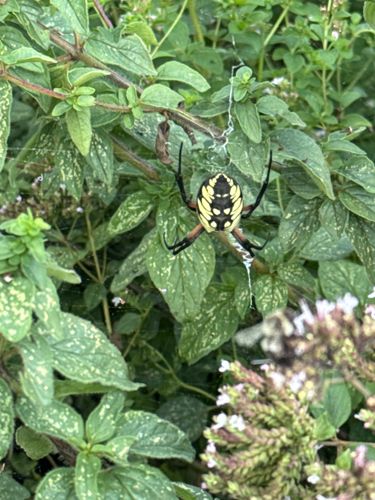Black and Yellow Garden Spider, Zipper Spider, Corn Spider
Scientific Name: Argiope aurantia
Order & Family: Order Araneae, Family Araneidae (Orb-weaver spiders)
Size: Females are significantly larger than males, with a body length ranging from 19-28 mm (0.75-1.1 inches). Males are typically 5-9 mm (0.2-0.35 inches).

Natural Habitat
Commonly found in gardens, fields, meadows, and along the edges of forests. They prefer sunny areas with tall vegetation to anchor their webs.
Diet & Feeding
Strictly carnivorous, feeding on a wide variety of insects caught in their webs, including flies, grasshoppers, crickets, cicadas, wasps, and bees.
Behavior Patterns
Female argiopes construct large, intricate orb webs, often with a distinctive zigzag stabilimentum (a thickened silk decoration) in the center or across the hub. They typically sit head-down in the center of the web, waiting for prey. When disturbed, they may vibrate their web rapidly or drop from the web to hide. Males are much smaller and spend time on the edge of the female's web, waiting for an opportunity to mate. They are most active during the day.
Risks & Benefits
Potential Risks: While venomous, their bite is generally not considered dangerous to humans. It may cause localized pain, redness, and swelling, similar to a bee sting, but serious reactions are rare. They are not aggressive and will only bite if provoked or accidently pressed against the skin. Potential Benefits: They are highly beneficial predators in gardens and natural ecosystems, helping to control populations of various insect pests. Their diet includes many common garden pests, contributing to natural pest control.
Identified on: 8/12/2025